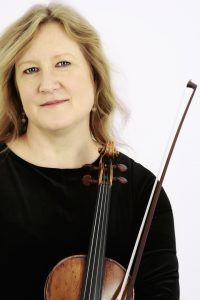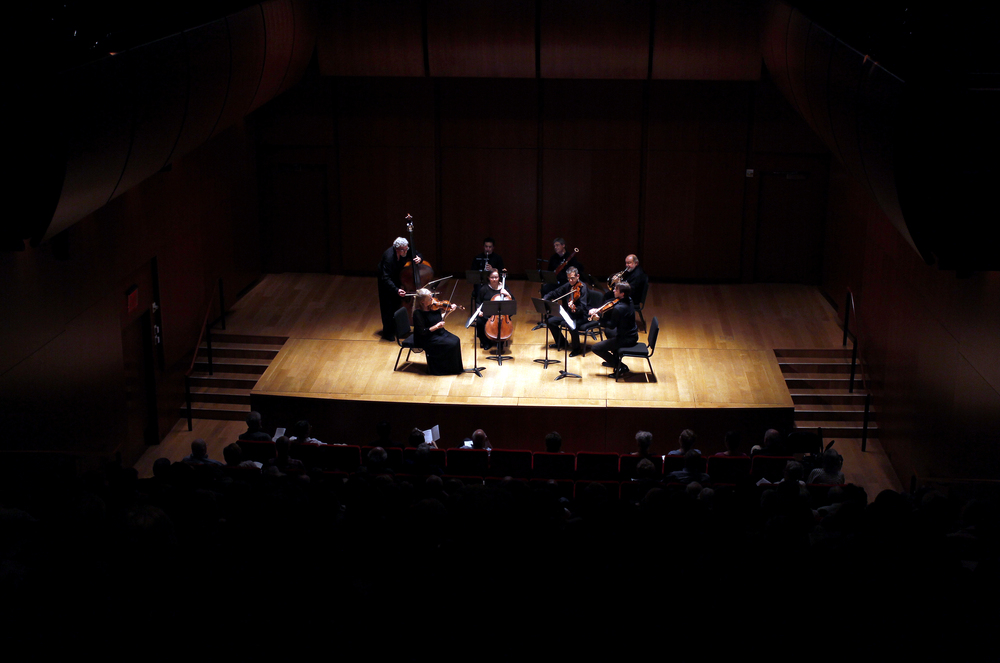Mendelssohn the Prodigy
Part of: Chamber Music Series
April 28 – May 1
Brooklyn Museum • Merkin Hall • The Morgan Library & Museum
A recently rediscovered concerto and the beloved Octet for Strings explore the extraordinary talents of Mendelssohn the Prodigy
Read the program notes before the concert.
Learn more about the artists and discover more about the works on this program before joining us for one of three concerts this April and May!
At A Glance
The finale of our Chamber Music Series showcases the depth of the young Felix Mendelssohn’s extraordinary talent with his Octet in E-flat Major and the recently rediscovered Concerto in D Minor for Violin and String Orchestra, both written when the composer was still a teenager. Mendelssohn was already recognized as a child prodigy by the likes of Johann Wolfgang Goethe and Carl Zelter when he composed his Octet in E-flat Major Strings, considered to be his first masterpiece, at the age of 16. Written in 1822, when Mendelssohn was only 13, the Concerto in D Minor for Violin and String Orchestra was rediscovered in 1951 when the manuscript was presented by the Mendelssohn family to Yehudi Menuhin, who quickly published, performed, and recorded the work.
Listen!
Listen to our favorite recordings of each of the works on this program. Open Spotify
Q&A with soloist Krista Bennion Feeney

When did you start playing with St. Luke’s Chamber Ensemble and Orchestra of St. Luke’s?
My first concert with the St. Luke’s Chamber Ensemble was in June 1983 with Brahms’ Clarinet Quintet. I had been invited to play three weeks with the Ensemble and Orchestra of St. Luke’s at Caramoor that summer. Making music with them was eye-opening and felt right. They made me a member at the end of the summer and I’ve been playing with St. Luke’s ever since.
At age 15 you performed the other Mendelssohn violin concerto, the one in e minor with the San Francisco Symphony. Was that your first introduction to Mendelssohn?
When I was a child, we lived with my grandmother, who was a pianist and gave piano lessons in the house. That was my first exposure to many great composers, other than the lullabies and songs my Mom sang. Hearing certain pieces jolts me back to my 3-year-old self. Apparently, I would sit on Grandma’s lap for hours near the sunny window where her piano was, and she played Mendelssohn’s Songs Without Words, and works of Brahms, Chopin, Mozart, to name a few. Hearing certain phrases from those piano pieces now brings on intense emotions, and I can feel when it’s a piece I heard many times in that somewhat preconscious idyllic state.
What is it about Mendelssohn’s writing for the violin that speaks to you?
Mendelssohn’s music has this wonderful searching quality, like in the opening solo of the Violin Concerto in D Minor, as well as a beautiful tenderness, both of which I love. There’s also this sense of joy and wonder in his music, often when you least expect it. Although the key of D Minor can sometimes be somber, almost ominous (think Mozart’s Requiem in D Minor), Mendelssohn’s concerto is quite mischievous and playful; the slow movement is sublime.
Although it was written in 1822, the Violin Concerto in D Minor was only recently rediscovered in 1951. What is like performing a piece by a well-regarded composer like Mendelssohn that is still relatively unknown?
It’s liberating! There aren’t several famous, towering interpretations and recordings looming over you. I feel more freedom to make artistic choices, because there’s less of an expectation of how it is to be played. Mendelssohn didn’t include many bowings in the manuscript, and not a lot of dynamics either, so we can make a lot of those creative and musical decisions for ourselves.
Did you make any discoveries while preparing the Violin Concerto in D Minor?
I first heard the Violin Concerto in D Minor years ago, when I was performing with NCCO in San Francisco. The soloist was my former teacher Stuart Canin, and the way he played it was so inspiring. There are harmonic minor scales running through the entire work, and they are evocative of the Freygish scale you hear in Sacred Jewish and Klezmer music (think “Hava Nagila”). This is because the flatted sixth degree of the harmonic minor scale evokes the flatted second degree of the Freygish scale. In fact, if you start on the fourth degree of a Freygish scale and continue playing all the same notes as the Freygish, you are then playing a harmonic minor scale. In many cultures outside of Western classical music, minor scales are associated with joy and celebration.
Do you have any favorite passages in the Violin Concerto in D Minor?
Yes, I actually have a favorite bar (83) but it’s really the whole passage that I love. Not long after the opening solo violin statement in D Minor, there is a transition into F Major. For the first eight bars of the tune, the violin and viola parts trade off flowing eighth notes. Then the violins drop out and the viola takes over the eighth notes so it’s just the solo violin, bass line and viola playing. That’s my absolute favorite moment in the concerto.
